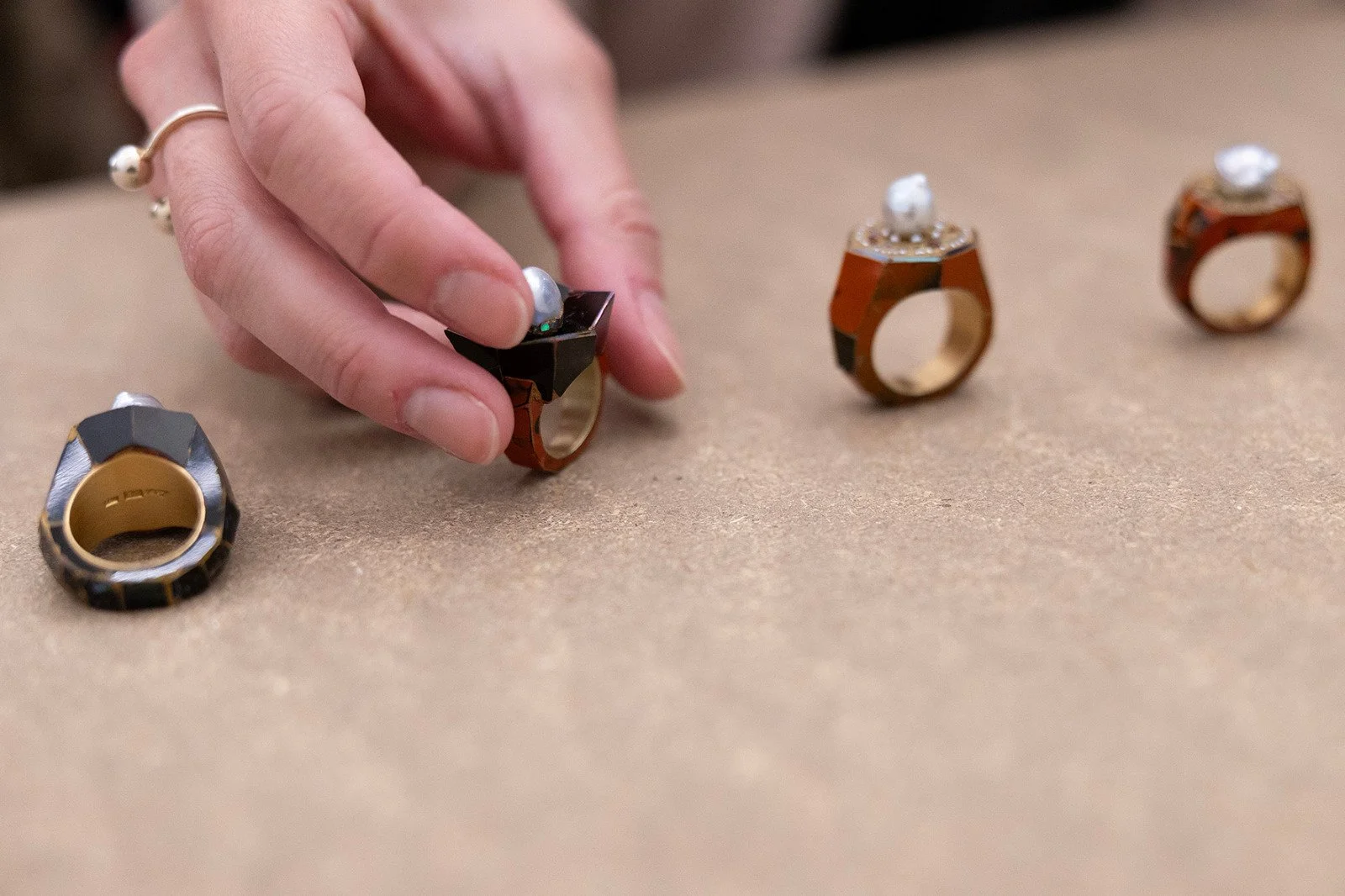Bernhard Schobinger presents Kimiaki Kageyama
Solo exhibition / 17.5–19.7 2025
Galleria Antonella Villanova
Bernhard Schobinger has a special relationship with Japan; for years, he has spent several months a year there, teaching and holding workshops at various institutes.
The Japanese use the term Wabi-sabi in reference to a vision of the world and of aesthetics based on acceptance of the impermanence of things and the beauty of their imperfection. This vision often underlies Schobinger’s art, with works that are apparently imperfect (pieces of glass, scrap metal, found objects) yet beautiful - a sort of cross-fertilization between Wabi-sabi and the Western conception of beauty.
Because of his deep understanding of Japan and its culture, the Gallery has asked Bernhard Schobinger to present the work of Kimiaki Kageyama, one of Japan’s most important master jewelers.
Kimiaki Kageyama’s pieces – little leaves, branches, rings adorned with pearls – are distinguished by his use of urushi, a resin extracted from the tree of the same name.
Used around 5500 years ago to decorate warriors’ and hunters’ weapons, urushi was adopted in the 6thcentury by Buddhist monks to adorn wooden statuettes, and starting around 1400, to restore and embellish materials like porcelain, metals and fabrics.
Along with urushi, some rings in the exhibition are adorned with Akoya pearls. Famed for their extraordinary shine, these pearls were first cultivated in the Sea of Japan in the late 19thcentury. Akoya pearls and urushi express Kimiaki Kageyama’s ties to the ancient traditions of his homeland, reflecting Japanese culture’s attention to the fragility and preciousness of things of this world. Extremely realistic leaves and delicate twigs become pins that immediately evoke floral designs in Japanese prints, sweetly melancholic in their fragility.


